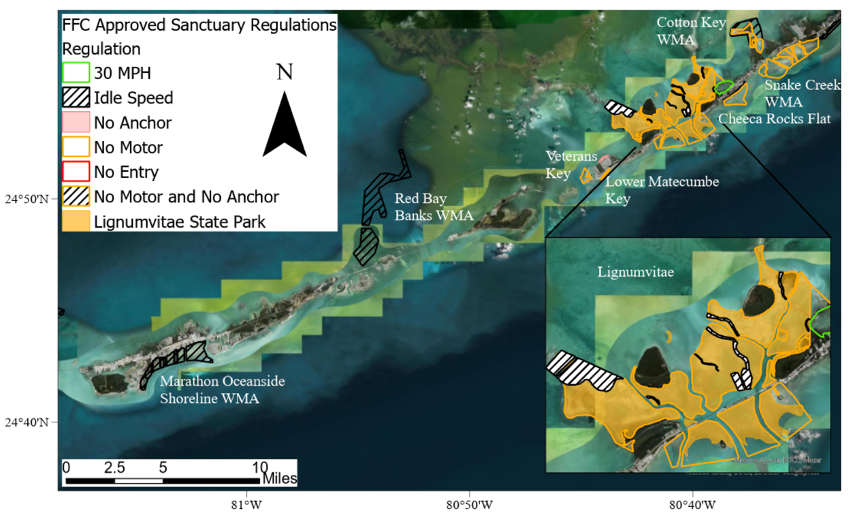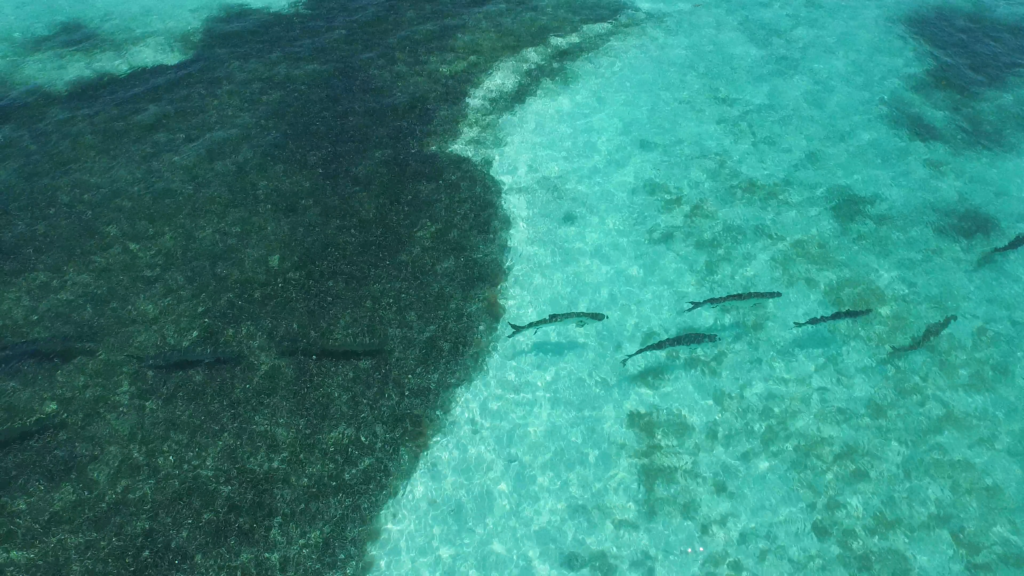A string of tarpon in the Florida Keys. Photo: Marty Dashiell
BTT is working in close collaboration with the Florida Keys Fishing Guides Association (FKFGA) and the Lower Keys Guides Association (LKGA) to support a set of science-based recommendations for the Florida Keys National Marine Sanctuary (FKNMS) Restoration Blueprint. The coalition’s recommendations underscore the critical importance of habitat, water quality and enforcement—all to ensure that our shallow water habitats are adequately protected while also ensuring responsible access. In total, these recommendations would increase seagrass and hard bottom protections in the Middle Keys by 2029 and 397 acres respectively.
For Wildlife Management Areas (WMAs) that the coalition supports as proposed by the FKNMS, the coalition’s overall recommendation is for responsible access that provides enhanced habitat protection. For WMAs, the coalition recommends that the “no entry” zoning proposed by the FKNMS be adjusted to 300’ as “no motor” zones, with 50’ “no entry” buffers that allow casting into them unless science suggests they are active bird colonies or nesting areas.
Middle Keys Management Area
The Middle Keys, which span from Craig Key to the south end of Seven Mile Bridge, are vital to our tarpon fishery. However, tarpon are stressed by jet skis and other marine activities while they rest and when they swim along their migration pathways. The coalition’s recommendations for the Middle Keys are presented on this map and would protect essential tarpon habitats through marine zoning and reduce the impact of increasing marine use on the flats fishery. The recommendations include:
- Support for the FKNMS Restoration Blueprint Channel Key Banks WMA, Marathon Oceanside Shoreline WMA, and Red Bay Bank WMA.
- Modification of the Ashby-Horseshoe Key WMA to remain as a no motor zone, and expansion of Cotton Key WMA and Snake Creek WMA. Maintaining Ashby-Horseshoe Key WMA as a no motor zone is important to the coalition as an area to catch bait that is fishable in all weather conditions.
- Modification of Tavernier Creek to be an idle speed zone, Little Basin be a 30-mph zone, and Wheel Ditch channel be restricted to vessels over 25-feet long. All three zones should be accompanied by signs stating “remain slow to oncoming traffic” or “shallow water habitat,” as these channels are becoming more dangerous to smaller vessels due to the rapid growth in popularity of larger and faster center console vessels.
- Establishing four additional, new zones to protect important flats fishing habitats from damage caused by increasing marine use, and reduces stress on target species caused by boats traveling on plane:
- A no motor zone encompassing Veterans Key with an idle speed zone for the channel leading to Veterans Key
- A no motor zone oceanside of Upper Matecumbe Key expanding approximately a mile from the shoreline, just north of Cheeca Rocks forthcoming as Cheeca Rocks Flat
- A no motor zone expanding 300 ft off the shoreline of Lower Matecumbe Key
- A no motor and idle speed zone adjacent to the existing no motor zones of Lignumvitae State Park
Recommendations for new zones or the expansion of FKNMS Restoration Blueprint zones are labeled on the map. To learn more, Click Here to read BTT’s comments on the FKNMS Restoration Blueprint. Click Here to read BTT, FKFGA, and LKGA’s Summary of Recommendations for FKNMS.





